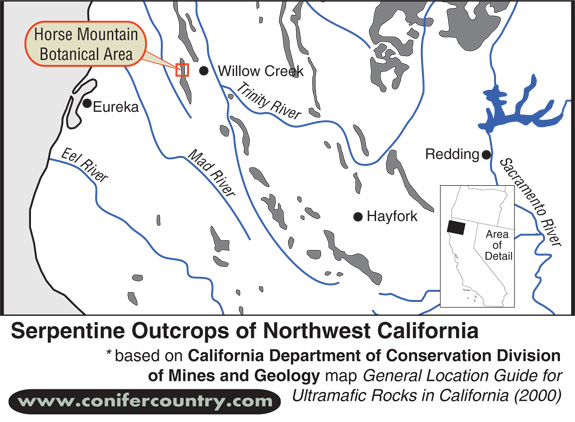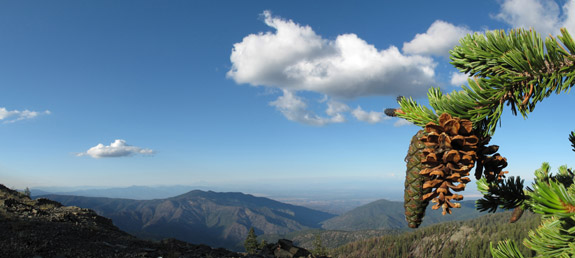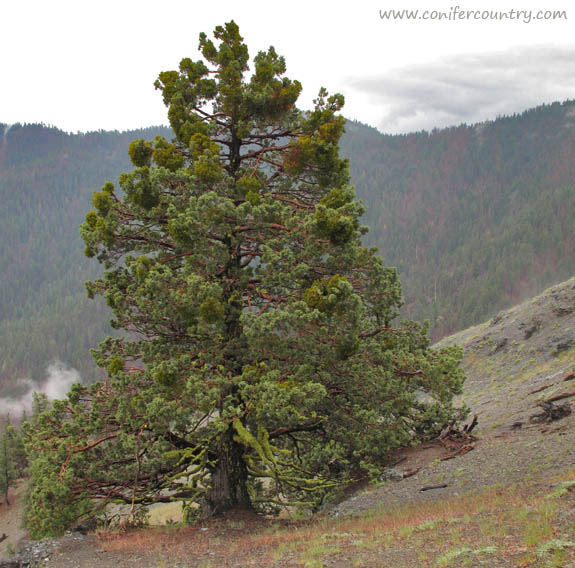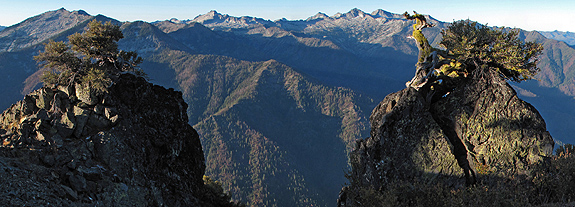Original Publication DATE: 2/14/2010 3:14:00 PM
Venturing east on Highway 299 from Humboldt Bay, a stark transition–rarely noticed by travelers–occurs at Berry Summit (2900 ft). Leaving the Coast Range and entering the Klamath Mountains the landscape becomes defined by varied, complex rock types. One of these unusual rock types is known as ultramafic rock or more commonly as Serpentine. In North America, serpentine rock appears at the Earth’s surface most frequently in northwest California. The Horse Mountain Botanical Area (HMBA) is a celebration of the rock and climate that interact to create unique high elevation plant communities. In coastal northwest California, spring has arrived. Allison and I did not want winter to pass us by–we were ready for some snow play. Packing our snowshoes and lunch, we drove to the snow of the HMBA in the Klamath Mountains in less than an hour.




